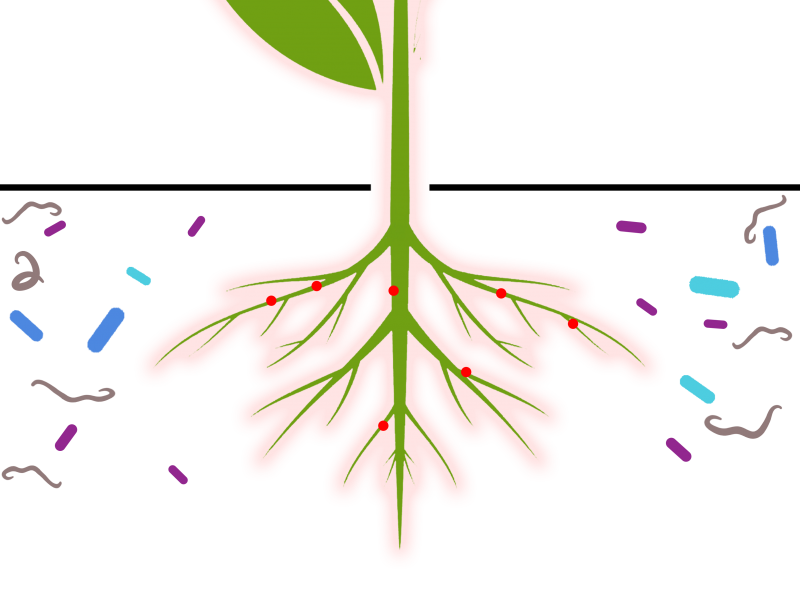Will Tankard (Talk | contribs) |
m |
||
| Line 148: | Line 148: | ||
<div class="numbertext">1 / 15</div> | <div class="numbertext">1 / 15</div> | ||
<img src="https://static.igem.org/mediawiki/2018/thumb/f/fc/T--Newcastle--Slide1.png/800px-T--Newcastle--Slide1.png"> | <img src="https://static.igem.org/mediawiki/2018/thumb/f/fc/T--Newcastle--Slide1.png/800px-T--Newcastle--Slide1.png"> | ||
| − | <div class="text"> | + | <div class="text">Soils contain diverse microbial communities</div> |
</div> | </div> | ||
| Line 154: | Line 154: | ||
<div class="numbertext">2 / 15</div> | <div class="numbertext">2 / 15</div> | ||
<img src="https://static.igem.org/mediawiki/2018/thumb/b/bb/T--Newcastle--Slide4.png/800px-T--Newcastle--Slide4.png"> | <img src="https://static.igem.org/mediawiki/2018/thumb/b/bb/T--Newcastle--Slide4.png/800px-T--Newcastle--Slide4.png"> | ||
| − | <div class="text">Within each | + | <div class="text">Within each community are microbes with useful abilities</div> |
</div> | </div> | ||
| Line 160: | Line 160: | ||
<div class="numbertext">3 / 15</div> | <div class="numbertext">3 / 15</div> | ||
<img src="https://static.igem.org/mediawiki/2018/thumb/3/34/T--Newcastle--Slide3.png/800px-T--Newcastle--Slide3.png"> | <img src="https://static.igem.org/mediawiki/2018/thumb/3/34/T--Newcastle--Slide3.png/800px-T--Newcastle--Slide3.png"> | ||
| − | <div class="text"> | + | <div class="text">Bacteria that live harmlessly within plant tissues are known as endophytes</div> |
</div> | </div> | ||
| Line 166: | Line 166: | ||
<div class="numbertext">4 / 15</div> | <div class="numbertext">4 / 15</div> | ||
<img src="https://static.igem.org/mediawiki/2018/thumb/5/56/T--Newcastle--Slide5.png/800px-T--Newcastle--Slide5.png"> | <img src="https://static.igem.org/mediawiki/2018/thumb/5/56/T--Newcastle--Slide5.png/800px-T--Newcastle--Slide5.png"> | ||
| − | <div class="text">By | + | <div class="text">By engineering endophytic bacteria - rather than the plant - we may influence the microbial community</div> |
</div> | </div> | ||
| Line 172: | Line 172: | ||
<div class="numbertext">5 / 15</div> | <div class="numbertext">5 / 15</div> | ||
<img src="https://static.igem.org/mediawiki/2018/thumb/6/6f/T--Newcastle--Slide6.png/800px-T--Newcastle--Slide6.png"> | <img src="https://static.igem.org/mediawiki/2018/thumb/6/6f/T--Newcastle--Slide6.png/800px-T--Newcastle--Slide6.png"> | ||
| − | <div class="text"> | + | <div class="text">The endophytes ay be programmed to attract or repel other microbial species</div> |
</div> | </div> | ||
| Line 178: | Line 178: | ||
<div class="numbertext">6 / 15</div> | <div class="numbertext">6 / 15</div> | ||
<img src="https://static.igem.org/mediawiki/2018/thumb/e/eb/T--Newcastle--Slide7.png/800px-T--Newcastle--Slide7.png"> | <img src="https://static.igem.org/mediawiki/2018/thumb/e/eb/T--Newcastle--Slide7.png/800px-T--Newcastle--Slide7.png"> | ||
| − | <div class="text"> | + | <div class="text">Biosynthesis of signalling chemicals may attract free-living nitrogen fixing bacteria, reducing the need for synthetic fertilisers</div> |
</div> | </div> | ||
| Line 184: | Line 184: | ||
<div class="numbertext">7 / 15</div> | <div class="numbertext">7 / 15</div> | ||
<img src="https://static.igem.org/mediawiki/2018/thumb/5/5b/T--Newcastle--Slide10.png/800px-T--Newcastle--Slide10.png"> | <img src="https://static.igem.org/mediawiki/2018/thumb/5/5b/T--Newcastle--Slide10.png/800px-T--Newcastle--Slide10.png"> | ||
| − | <div class="text"> | + | <div class="text">Endophytic chassis organisms could be used to produce antifungal or insecticidal chemicals or to directly affect plant stress tolerance</div> |
</div> | </div> | ||
Revision as of 13:31, 13 October 2018
Welcome to Alternative Roots
Alternative Roots
Newcastle iGEM
Alternative Roots
PROJECT OVERVIEW
Our Sponsors
Newcastle iGEM is proud to be sponsored by:
Contact Us
Reach out for a collaboration or just say hello
Get Involved
We are always happy to hear from individuals, groups or organisations that would like to support our project. If you wish to discuss a collaboration, sponsorship or if you just want to learn more about the project, please get in touch using the contact details on the right. Alternatively, if you would like to donate a small amount to fund our project, you can do so through Experiment.com - an online platform for discovering, funding, and sharing scientific research.
Any support is greatly appreciated and funds raised will be used in all areas of the iGEM project - such as lab equipment, human practices research, merchandise and travel to jamboree in Boston, USA.
Contact Info
Where to Find Us
Devonshire Building
Newcastle University
Newcastle upon Tyne
NE1 7RU
Email Us At
igem.team@newcastle.ac.uk
















